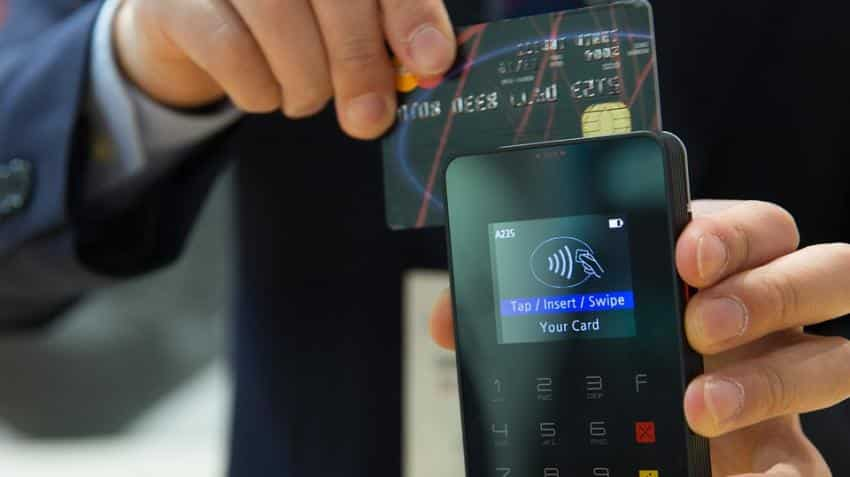E-commerce sector rides on Digital India, note ban
More than computer-based Internet penetration and broadband extension, the record growth of smartphones and the 4G network rollout made e-tailing popular even in secondary cities and towns across the country thanks to easy and quick access to information and data on products and services.

Adopting disruptive technology and riding on the Digital India bandwagon, the e-commerce sector has survived the slowdown in 2017 and benefited from the note ban, which spurred online transactions.
More than computer-based Internet penetration and broadband extension, the record growth of smartphones and the 4G network rollout made e-tailing popular even in secondary cities and towns across the country thanks to easy and quick access to information and data on products and services.
"In the growing e-commerce business, e-tailers like Flipkart, Amazon and Snapdeal have led the growth, with more customers shopping online than ever before in the digital space," a market analyst told IANS here.
Though e-tailing accounts for 2.5 per cent of the retail trade, its advantages are making more people buy groceries, vegetables, fruits, chicken, eggs, meat and fish online from BigBasket, Fresh to Home, Nature Fresh and Grofers sites in metros like Bengaluru, Chennai, Hyderabad, Kolkata, Mumbai, NCR and Pune.
"As commuting through heavy traffic and finding a place for parking becomes difficult, we are hard-pressed for time to shop offline. It`s easy and cheaper to order and get what we need -- and at discounted prices than relying on hard bargaining," said homemaker P. Susheela in the city`s southeast suburb.
Not to be left out, popular eateries like KFC, Pizza Hut, McDonald`s, SubWay and a host of Indian food joints have extended their services online, with dedicated portals for orders, payments and delivery on time.
"Growing consumerism, disposable incomes, changing lifestyles, extended work hours and social gatherings have made ordering food from outside common as it saves time and is made easier by multiple e-payments," the analyst said.
Though demonetisation disrupted the economy and caused hardship to millions of people using cash, the controversial move accelerated digital transactions and spawned a plethora of e-payment gateways.
Digital payments firm Paytm unveiled its e-commerce arm Paytm Mall in February and wooed customers to use its gateway for buying even offline through its omni-channel from retail chains like Big Bazaar, Spar, Hyper City and other supermarkets.
The Unified Payment Interface (UPI) of the National Payments Corporation of India (NPCI) also helped to spawn scores of state-run and private digital payment channels across the country and benefited e-commerce players in other sectors like B-2-B, B-2-C and government services.
Online payments were made more acceptable through state-run BHIM (Bharat Interface for Money) and Bharat QR code for scanning and paying.
"The increasing mobile and Internet usage, mobile-commerce sales, advanced shipping, multiple payment options and discounts have fuelled the growth of the e-commerce sector across the country," the study noted.
Online access to global brands and products across verticals have given an opportunity and choice for netizens to decide what and when to buy from home or office and commuting or travelling outside.
Increasing awareness on the benefits of online trading has also helped people opt for virtual shopping, selecting, ordering, transacting business in retail and other sectors like logistics, healthcare, education, procurement and a range of services like booking tickets for travelling or even watching films.
"The e-commerce retail market is estimated to be $12 billion in gross merchandise value (GMV) terms. Sales rose 40 per cent due to smart deals and huge discounts offered to lure consumers into online shopping," said a marketing research official.
Electronics continues to be the favourite in e-tailing, accounting for 47 per cent of e-sales, followed by apparel with 31 per cent e-sales.
According to a report by global professional services firm KPMG, online spending, including domestic and cross-border shopping, is set to grow 31 per cent annually to $136 billion by 2018.
"Cross-border shopping by Indians was Rs 58,370 crore ($9.1 billion) in 2016 and is expected to grow 85 per cent annually in 2017. The US, Britain and China are preferred countries for cross-border shopping," said the report.
The Indian consumer Internet market is projected to grow 44 per cent annually to $65 billion in 2017 from $45 billion in 2016.
Online travel agents have 70 per cent market share in the internet consumer segment, while the remaining 30 per cent is contributed by e-tailing, fashion, furniture, grocery, hotel, food tech, cab aggregators, education technology and alternative lending among others.
Get Latest Business News, Stock Market Updates and Videos; Check your tax outgo through Income Tax Calculator and save money through our Personal Finance coverage. Check Business Breaking News Live on Zee Business Twitter and Facebook. Subscribe on YouTube.
06:50 PM IST











 How to lock/unlock Aadhaar biometrics via UIDAI portal
How to lock/unlock Aadhaar biometrics via UIDAI portal  Indian firms fast adopting Digital Twin tech to boost transformation: Report
Indian firms fast adopting Digital Twin tech to boost transformation: Report  India to sign MoU with Antigua & Barbuda for cooperation on digital transformation
India to sign MoU with Antigua & Barbuda for cooperation on digital transformation Cabinet approves extending Digital India program with Rs 14,903 cr outlay: 1,200 startups, 9 more supercomputers and re-skilling of 6.25 lakh IT professionals planned - check details
Cabinet approves extending Digital India program with Rs 14,903 cr outlay: 1,200 startups, 9 more supercomputers and re-skilling of 6.25 lakh IT professionals planned - check details Proposed Digital India Act will have huge section on online safety, trust: MoS IT
Proposed Digital India Act will have huge section on online safety, trust: MoS IT